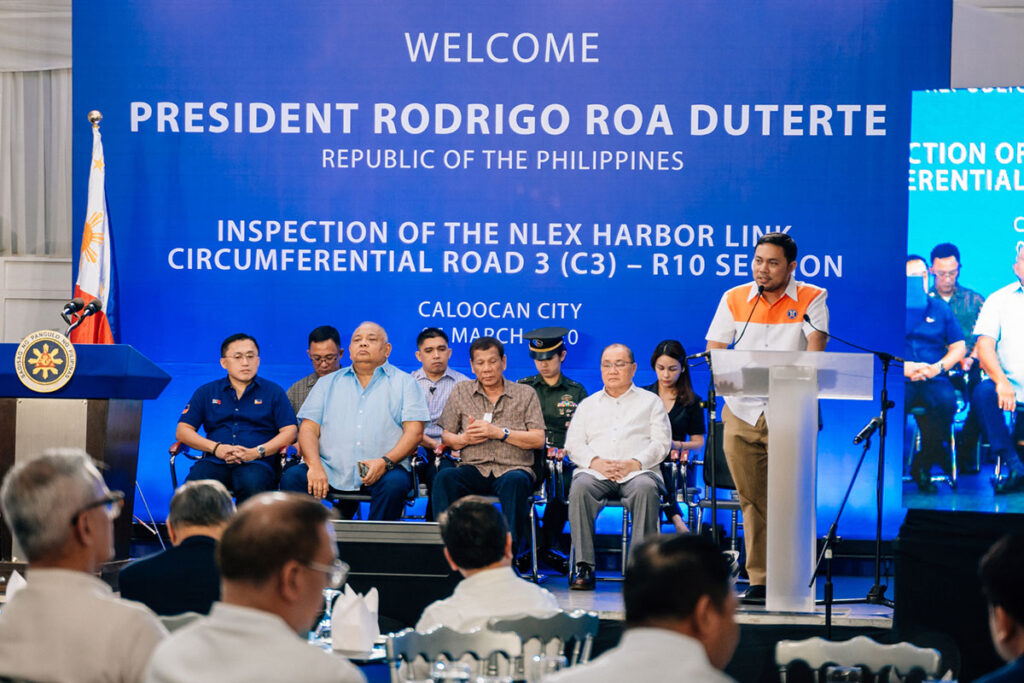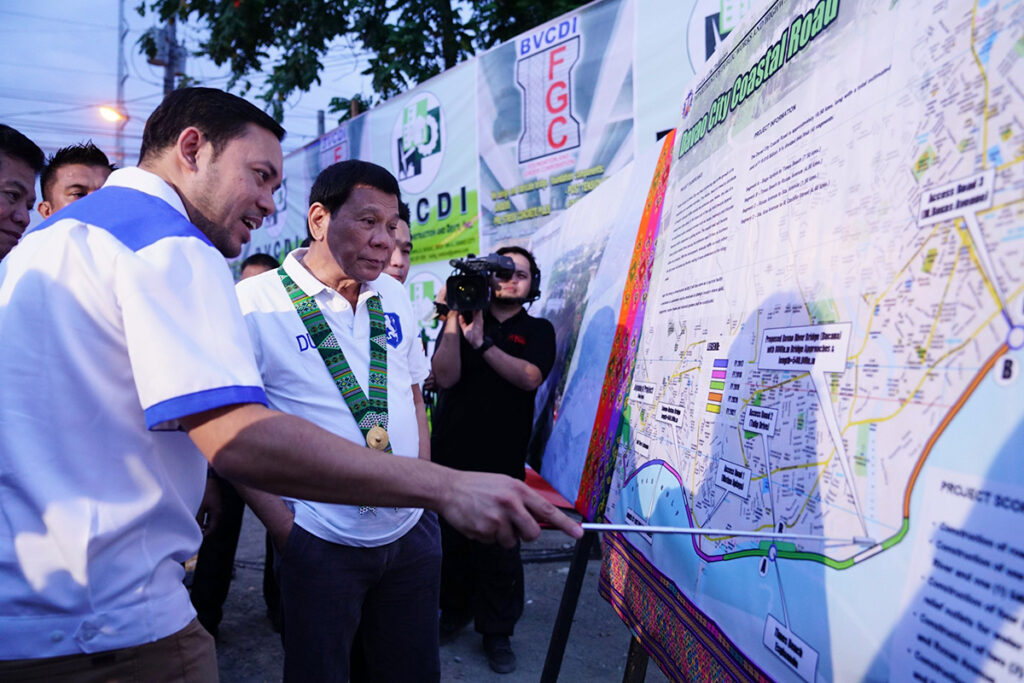With less than a year left in President Rodrigo Duterte’s term, every Juan is asking: Where are we on the government’s enormous promises of the “Build, Build, Build” program?
And so we asked Public Works and Highways Secretary Mark Villar in an email interview to loop us in on DPWH’s accomplishments from 2016 to 2020.
Launched in 2017, the 8.4-trillion infrastructure program is aimed at reducing poverty, stimulating economic growth, and reducing traffic congestion in Metro Manila.
Binge building
The Department of Public Works and Highways (DPWH), in the last five years under the leadership of Secretary Villar, has implemented almost three-fold more projects than any administration in the last five decades.

From 2016 to 2020, the DPWH’s Build, Build, Build program was able to accomplish public infrastructure projects amounting to 2.5 trillion as compared to the P820.4 billion from 2011 to 2015, an increase of 209 percent or P1.7 trillion worth of projects.
“The infrastructure spending of the Duterte administration in the last four years is higher than the infrastructure spending in the last two decades,” explains Secretary Villar. “From 2016 to 2019, we have already spent P3.4 billion. The Philippines has allocated only P2.9 trillion for infrastructure from 1992 to 2016. And we have laid out the most number of masterplans in Philippine history.”
With the increase in infrastructure investment, the DPWH was also able to generate as much as 6.6 million jobs nationwide from 2016 to 2020. An estimated 1.6 million jobs will likely be generated from the 2021 budget of the department.

When asked what he considers as one of the most important projects, the amiable secretary cited the EDSA Decongestion Program.
“It is composed of 25 projects, which include 14 expressways (spanning 121 kms) and 11 bridges (spanning 9.3 kms). We have already opened the main line of Skyway Stage 3, the NLEX Harbor Link, C5 Southlink, Radial Road 10, the Laguna Lake Highway, Kalayaan Bridge and Estrella Pantaleon Bridge, among others,” Secretary Villar enthuses.
Within the term of the President, the DPWH will open the España ramp of the NLEX Connector, the BGC Viaduct, and the Binondo-Intramuros Bridge.
“Our goal is to connect the northernmost part of Manila to the southern portion within a span of 30 minutes and ultimately link every city in Metro Manlia within a 20- to 30-minute time frame,” he says.

The secretary and his team’s hard work didn’t go unnoticed.
In President Duterte’s State of the Nation Address recently, he lauded the DPWH for its noteworthy accomplishments.
“The success of the ‘Build, Build, Build’ program is the collective effort of 6.5 million Filipinos,” enthuses the DPWH secretary. “Finally, we are able to see projects we only saw in photos. This project is not only for our generation. It is for our children and grandchildren.”
Under the able leadership of Secretary Villar, the DPWH has already completed 29,264-kms of roads, 5950 bridges, 11,340 flood control projects, 150,149 classrooms and 222 evacuation centers.
“The work is not done yet. As we speak, DPWH is working to complete 15,134 kms of roads, 1,859 bridges, 4,155 flood control projects, 17,647 school buildings, and 105 evacuation centers,” notes Secretary Villar.
“Build, Build, Build” will ultimately connect 81 provinces, 146 cities and 1,489 municipalities.
Dreaming the impossible dream
According to Secretary Villar, “Build, Build, Build” is a collective movement that has allowed Filipinos to dream and work together for a better Philippines.

“The Panguil Bay Bridge, the Cebu Cordova Link Bridge, the Pigalo Bridge, the Kalibo Bridge, the Aganan Bridge, the Bolo-Bolo Bridge and the Anduyan Bridge gave us a glimpse of what Filipinos could expect and achieve together,” the Secretary says. “Indeed, impossible is nothing. We were able to connect Luzon, Visayas and Mindanao via land travel amid the pandemic.”
Indeed, the pandemic posed a lot of challenges.
“There were a lot of sacrifices that had to be made,” shares Secretary Villar.
For instance, construction workers weren’t able to see their families until the projects were completed.
“We were the first one to do the bubble,” notes Secretary Villar. “Without the sacrifices of 6.5 million construction workers, ‘Build, Build, Build’ would remain a dream. If it weren’t for them, we would not have been able to drive through the Skyway or the Kalayaan Bridge. Farmers in Isabela would still have to take a 76-km detour instead of a 10-minute ride.”
Secretary Villar said by the time President Duterte steps out of office in 2022, the public may expect the completion of the Department’s ongoing projects which include 15,134 kilometers of road construction, rehabilitation and widening; 1,859 bridge rehabilitations, retrofittings, replacements and widenings; 4,155 flood-control projects; 17,647 more classrooms, 186 school workshop buildings, and 99 evacuation centers.
“We are confident and we are really pushing to achieve our goal that, by the end of this administration, every Filipino will be able to reap the benefits of these infrastructure projects that they very much deserve,” he adds.
When asked about his future plans after his term ends, the “dreamer and builder” hastily replies: “I’ll still be advocating for ‘Build, Build, Build’ and the men behind it. When we took over in 2016, the country was losing P3.5 billion a day due to Metro Manila traffic. JICA predicted this to increase to P5.4 billion in 2035. We have to work harder so that the next generation won’t inherit problems worse that what we had. They deserve to see and enjoy a better Philippines.”
#BrandedUp
